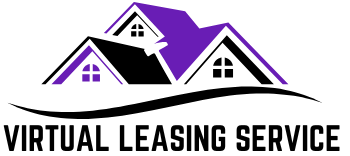In an era of technological innovation and digital transformation, the real estate industry stands at the forefront of change. Traditional practices are evolving rapidly, giving way to new methods that revolutionize leasing and renting properties. One such groundbreaking advancement is the advent of virtual leasing—a game-changer that has redefined the landscape of property management and leasing processes.
Gone are the days of physically touring numerous properties to find the perfect match. With virtual leasing, prospective tenants can explore properties from the comfort of their homes or offices, thanks to immersive virtual tours and cutting-edge 3D visualization technology. This shift enhances convenience and expands access, allowing individuals from across the globe to explore properties without the constraints of geographical limitations.
Unlocking the Future of Real Estate The Rise of Virtual Leasing

Virtual Leasing Employee streamlines the leasing process, offering a seamless and efficient experience for both landlords and tenants alike. Through online platforms and virtual leasing tools, individuals can browse available properties, schedule virtual tours, submit applications, and even sign leases—all with just a few clicks. This digitized approach minimizes paperwork, reduces administrative overhead, and accelerates the leasing timeline, ensuring a hassle-free experience for all parties involved.
Embracing Innovation in the New Normal
Amidst the challenges posed by the global pandemic, virtual leasing has emerged as a beacon of innovation, enabling continuity in the real estate market amidst unprecedented circumstances. With social distancing measures and safety precautions, virtual leasing provides a safe alternative to traditional in-person viewings, allowing leasing activities to proceed without compromising public health.
Empowering Accessibility and Inclusivity
Virtual leasing transcends barriers and property managements service, making the rental market more accessible and inclusive than ever before. Individuals with mobility challenges or those residing in remote locations can now easily participate in leasing, levelling the playing field and fostering more significant opportunities for all. Additionally, virtual leasing accommodates diverse preferences and lifestyles, catering to various tenant needs and preferences.
Looking Ahead The Future of Real Estate
As technology continues to evolve and consumer expectations evolve, virtual leasing is poised to become the new standard in the real estate industry. Its ability to deliver convenience, efficiency, and accessibility makes it a valuable asset for landlords, property managers, and tenants. By embracing innovation and harnessing the power of virtual, the future of real estate is brighter than ever, offering boundless possibilities for growth, efficiency, and success.
What is Virtual Leasing?

Virtual leasing is a modern approach to renting or leasing properties, leveraging advanced technology to facilitate remote interactions between landlords and prospective tenants. At its core, virtual leasing eliminates the need for in-person property viewings by offering immersive virtual tours and online tools that allow individuals to explore properties from anywhere with an internet connection. These virtual tours often utilize 3D visualization technology to provide a realistic and interactive experience, enabling users to navigate through different rooms and areas of the property as if they were physically present.
By embracing virtual, landlords and tenants can benefit from enhanced convenience, efficiency, and accessibility. Prospective tenants can browse available properties, schedule virtual tours, and submit applications from the comfort of their own homes, saving time and eliminating the need for multiple in-person visits. For landlords and property managers, virtual leasing streamlines the leasing process, reduces administrative overhead, and expands the reach of their properties to a broader audience beyond their immediate geographic location.
Virtual leasing and Virtual teams represents a paradigm shift in the real estate industry, offering a modern and innovative solution to age-old challenges. By harnessing the power of technology, virtual leasing opens up new possibilities for landlords and tenants, transforming how properties are leased and rented in today’s digital age. As technology evolves and consumer preferences change, Virtual Property leasing is poised to become integral to real estate’s future, revolutionizing how people find and secure their next home or commercial space.
Navigating the Virtual Leasing Process A Step-by-Step Guide

Virtual Property leasing revolutionizes the traditional rental process by harnessing the power of technology to create a seamless and efficient experience for landlords and tenants. But how exactly does virtual leasing work? Let’s delve into the process step by step.
Property Presentation
The journey begins with the presentation of the property in a virtual format. Landlords or property managers use specialized tools to create immersive 3D virtual tours that showcase every aspect of the property in stunning detail. From the layout of the rooms to the finishes and amenities, prospective tenants can explore the property as if they were physically present, all from the convenience of their computer or mobile device.
Virtual Tours and Exploration
Once the virtual tour is available, prospective tenants can embark on a virtual exploration of the property at their own pace. Through interactive features and intuitive navigation tools, they can move through each room, zoom in on specific features, and get a comprehensive feel for the space. This step allows tenants to thoroughly assess the property and envision themselves living or working there without needing in-person visits.
Application and Leasing
After identifying a property that meets their needs and preferences, tenants can proceed with the online application and leasing process. From submitting rental applications to providing supporting documents and signing lease agreements, every step can be completed through digital platforms and electronic signatures. This streamlined approach saves time and minutes of paperwork and offers added convenience and flexibility for tenants, regardless of location.
Virtual leasing simplifies the rental process by leveraging technology to bring properties directly to tenants’ fingertips. By offering immersive virtual tours, intuitive exploration tools, and online leasing capabilities, virtual Property leasing and Virtual Assistant ensure a convenient, efficient, and accessible experience for all parties involved.
Why Should You Adopt Virtual Leasing?

In today’s fast-paced world, efficiency and convenience reign supreme. Virtual leasing offers a myriad of benefits that make it an attractive option for landlords, property managers, and tenants alike. Virtual leasing saves time and resources by streamlining the leasing process. With the ability to conduct virtual tours and handle paperwork online, the need for physical visits and manual paperwork is significantly reduced, allowing for a quicker turnaround from property listing to lease signing.
Virtual Property leasing enhances accessibility and inclusivity in the rental market. By eliminating geographical barriers and providing virtual access to properties, individuals from diverse backgrounds and locations can participate in the leasing process without constraints. This inclusivity not only expands the pool of potential tenants but also fosters a more equitable and diverse rental market.
Virtual assistant can generate real estate leads and offer unparalleled flexibility and safety, particularly in the current landscape shaped by the COVID-19 pandemic. With social distancing measures in place, virtual property leasing provides a safe alternative to traditional in-person viewings, minimizing health risks while ensuring continuity in the real estate market. Additionally, the flexibility of virtual leasing accommodates varying schedules and preferences, empowering individuals to explore properties at their convenience.
In this sense, adopting virtual leasing isn’t just about embracing innovation—it’s about embracing efficiency, inclusivity, and safety in the real estate industry. By harnessing the power of technology, landlords, property managers, and tenants can enjoy a streamlined leasing experience that meets the demands of modern living.
Frequently Asked Questions (FAQs)
What is a Virtual Assistant Leasing Coordinator?
A virtual assistant leasing coordinator is a remote professional who assists with leasing activities for properties using virtual platforms and digital tools. They handle various tasks related to leasing, such as coordinating virtual tours, managing inquiries from prospective tenants, and facilitating the leasing process online.
How does a traditional leasing coordinator differ from a virtual leasing coordinator?
While a traditional leasing coordinator typically operates in a physical office or on-site, a virtual leasing coordinator works remotely, leveraging technology to conduct leasing activities online. While both handle similar responsibilities, such as managing inquiries, scheduling tours, and processing applications, the virtual leasing coordinator utilizes virtual platforms and digital tools to carry out these tasks from a remote location.
What tasks does a Virtual Assistant Leasing Coordinator handle?
A VA Leasing Coordinator is responsible for managing various aspects of the leasing process remotely. This includes coordinating virtual tours for prospective tenants, responding to inquiries via email or chat, assisting with application processing, and facilitating communication between landlords and tenants. Additionally, they may handle administrative tasks related to leasing, such as maintaining leasing databases and organizing virtual leasing events.
What methods do apartments use to incorporate virtual leasing?
Apartments implement virtual leasing by utilizing technology to offer virtual tours, conduct online leasing consultations, and facilitate digital lease signings. This may involve creating virtual tour videos, setting up virtual leasing platforms or websites, and providing virtual assistance to prospective tenants throughout the leasing process.
How do apartments utilize virtual leasing methods?
Virtual leasing apartments utilize technology to offer virtual tours, conduct online leasing consultations, and facilitate digital lease signings. This allows prospective tenants to explore properties and complete the leasing process remotely, from the comfort of their own homes.
How can properties incorporate virtual leasing into their leasing strategies?
Some virtual leasing ideas include offering virtual tours of properties, conducting online leasing consultations, providing virtual assistance to prospective tenants, and facilitating digital lease signings. These methods leverage technology to streamline the leasing process and enhance the overall tenant experience.
Conclusion
As the real estate industry continues to evolve, virtual leasing emerges as a transformative force, revolutionizing the way properties are leased and rented. Through the adoption of virtual platforms and digital tools, leasing coordinators and property managers can streamline processes, enhance accessibility, and adapt to the demands of modern living. From virtual tours to online lease signings, the convenience and efficiency offered by virtual leasing empower landlords and tenants alike, fostering a more inclusive and dynamic rental market.
In conclusion, the rise of virtual leasing signifies more than just a technological advancement—it represents a paradigm shift in the way we approach leasing and property management. By embracing innovation and leveraging the power of virtual platforms, the future of leasing is brighter than ever, offering boundless opportunities for growth, efficiency, and success in the ever-changing landscape of real estate. As we navigate the complexities of the digital age, virtual property leasing stands as a beacon of progress, reshaping the industry and unlocking new possibilities for landlords, tenants, and leasing professionals alike.



Add a Comment